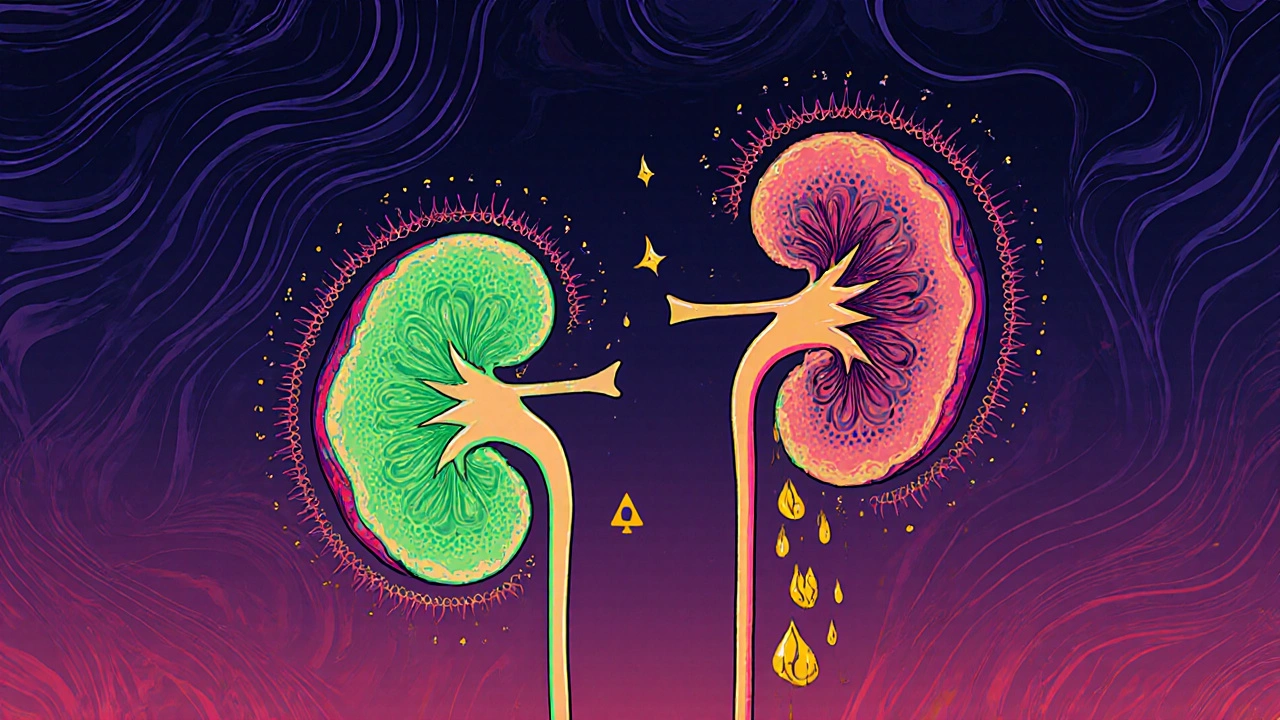
Chronic kidney disease doesn’t shout. It doesn’t cause pain in the early stages. You might feel fine, eat normally, sleep well - and still have damaged kidneys. By the time symptoms like fatigue, swelling, or foamy urine show up, the damage is often advanced. That’s why chronic kidney disease is called a silent killer. But here’s the good news: if caught early, progression can be slowed - sometimes stopped - for years, even decades.
What Exactly Is Chronic Kidney Disease?
Chronic kidney disease (CKD) means your kidneys aren’t filtering blood the way they should. It’s not a sudden event. It’s a slow decline, usually over years. The kidneys remove waste, balance fluids, control blood pressure, and make hormones that help your body make red blood cells. When they start failing, all of these functions get disrupted. The official diagnosis isn’t based on how you feel. It’s based on two lab tests, done at least three months apart. One measures how well your kidneys filter waste - that’s the eGFR. The other checks for protein in your urine - that’s the uACR. If both show problems, you have CKD. Many people miss this because doctors used to rely only on creatinine levels, which can be misleading. A person with low muscle mass, like an older adult or someone who’s underweight, might have normal creatinine even when their kidneys are failing. That’s why both tests are non-negotiable.The Two Tests That Save Kidneys
The eGFR (estimated glomerular filtration rate) tells you how much blood your kidneys filter each minute. A normal value is 90 or above. If it drops below 60 for three months or more, that’s stage 3 CKD. But here’s the catch: you can have CKD even if your eGFR is normal. That’s where the second test comes in. The uACR (urine albumin-to-creatinine ratio) looks for albumin - a protein that shouldn’t be leaking into your urine. Healthy kidneys hold onto it. Damaged ones let it escape. A uACR of 30 mg/g or higher means you have albuminuria, a major red flag. This is often the earliest sign of kidney damage, especially in people with diabetes or high blood pressure. Some people think a single normal creatinine test means they’re safe. It doesn’t. A 2018 national survey found that relying only on creatinine missed 30-40% of early CKD cases. That’s why guidelines from KDIGO and the National Kidney Foundation now say: no diagnosis without both tests.Stages of CKD - And Why Stage 1 and 2 Matter Most
CKD is divided into five stages based on eGFR and whether there’s kidney damage:- Stage 1: eGFR ≥90, but uACR ≥30 - kidneys are working fine, but there’s damage.
- Stage 2: eGFR 60-89, uACR ≥30 - mild loss of function, but damage is still present.
- Stage 3a: eGFR 45-59 - mild to moderate loss.
- Stage 3b: eGFR 30-44 - moderate to severe loss.
- Stage 4: eGFR 15-29 - severe loss.
- Stage 5: eGFR <15 - kidney failure.
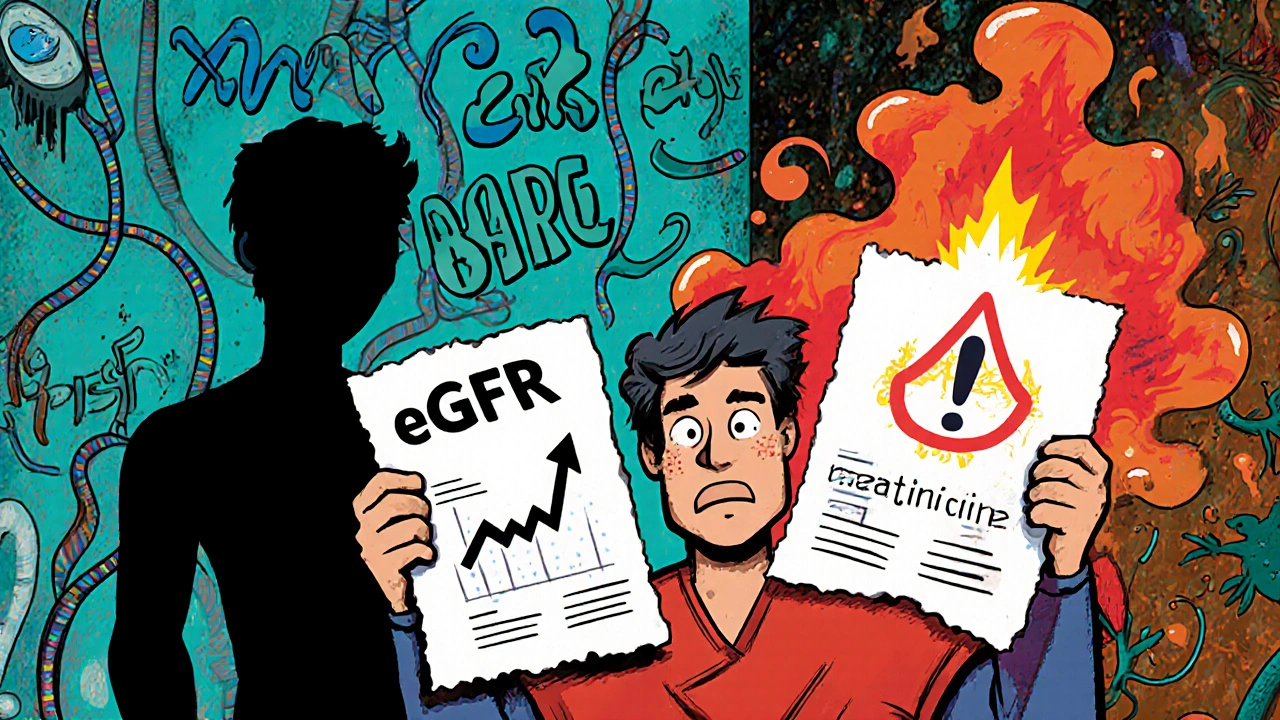
Who Needs to Be Screened - And How Often?
You don’t need to be screened if you’re young, healthy, and have no risk factors. But if any of these apply to you, you should be tested annually:- Diabetes (type 1 or type 2)
- High blood pressure
- Heart disease
- Obesity
- Family history of kidney failure
- African American, Native American, or Hispanic heritage
- Age 60 or older
- Long-term use of NSAIDs like ibuprofen or naproxen
What Happens After Diagnosis?
Finding out you have early CKD isn’t a death sentence. It’s a wake-up call. And you have tools to fight back. Medications: SGLT2 inhibitors - originally developed for diabetes - have been shown in trials like CREDENCE to cut the risk of kidney failure by 32% in people with stage 2 CKD and albuminuria. ACE inhibitors or ARBs are also used to lower blood pressure and reduce protein in the urine. These aren’t just for diabetics. They help anyone with protein leakage, regardless of diabetes status. Blood pressure control: Keeping it below 130/80 mmHg reduces progression by 27% compared to letting it stay at 140/90. That’s from the SPRINT trial. Most people think “normal” blood pressure is 120/80. But for CKD, 130/80 is the target. Anything higher increases strain on the kidneys. Diet: Reducing salt helps lower blood pressure and reduces fluid buildup. Limiting processed foods, canned soups, and fast food makes a real difference. Protein intake doesn’t need to be drastically cut in early stages - that’s an old myth. But eating too much protein can stress damaged kidneys. A registered dietitian can help you find the right balance. Stop smoking: Smoking narrows blood vessels, including those in the kidneys. Quitting slows decline faster than almost any medication.Why Most People Miss the Warning Signs
A 2022 study in the Annals of Internal Medicine found that only 52.7% of primary care doctors consistently order both eGFR and uACR for at-risk patients. In rural clinics, the failure rate hits 68.3%. Why? Electronic health records often don’t remind doctors to order both tests. Some think “creatinine is enough.” Others don’t know how to interpret the combination. One doctor told me: “I’ve been ordering creatinine for 20 years. Why change now?” But the science changed. The guidelines changed. The stakes changed. Patients also play a role. Many don’t know to ask. One Reddit user wrote: “My doctor only checked creatinine for 10 years. By the time they did uACR, I was stage 3.” Another said: “Caught at stage 1 during a routine check-up. Five years later, still stage 1. Medication and diet kept it stable.”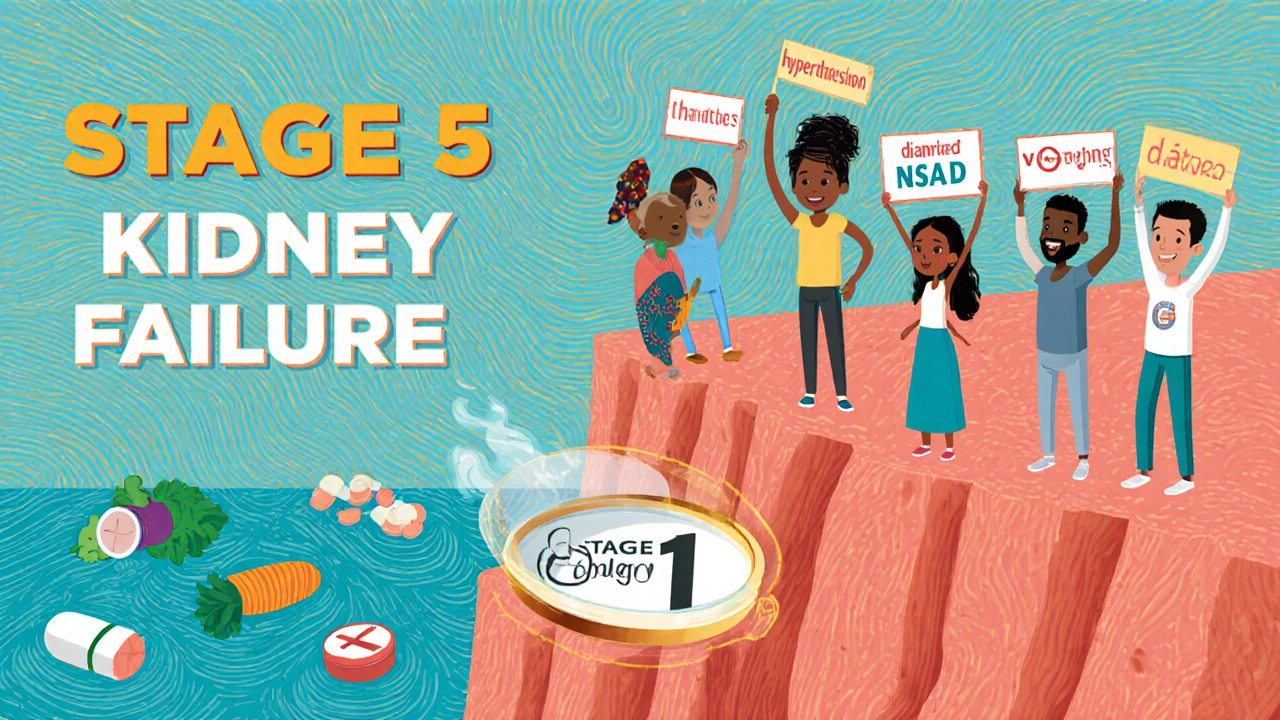
The Big Picture: Cost, Policy, and the Future
Treating kidney failure with dialysis costs over $100,000 per year. Early detection saves money - a lot of it. The U.S. spends $120 billion annually on kidney disease, mostly on late-stage care. A 2020 study showed that preventing progression in early CKD saves $1,850 per patient per year. Multiply that by millions, and you’re talking about $27 billion in annual savings. Medicare Advantage plans are starting to reward doctors for identifying early CKD. Humana saw a 19% jump in early detection after requiring dual testing. The Biden administration is investing $150 million to make dual testing mandatory in Federally Qualified Health Centers by 2026. That could find 1.2 million undiagnosed cases. New tools are coming. AI-powered risk predictors like NephroSight analyze 32 data points - from age to lab results to medication history - to flag high-risk patients before eGFR drops. Point-of-care uACR tests, approved by the FDA in 2023, could bring testing to your doctor’s office in minutes, not days.What You Can Do Right Now
If you’re at risk:- Ask your doctor for both an eGFR and a uACR test. Don’t accept one without the other.
- If you have diabetes or high blood pressure, insist on yearly testing - even if you feel fine.
- Get your blood pressure checked regularly. Write it down.
- Reduce salt. Avoid processed snacks and canned foods.
- Stop smoking. Talk to your doctor about quitting aids.
- Don’t take NSAIDs like ibuprofen daily without medical advice.
- Don’t panic. You’re not alone.
- Work with a nephrologist or a kidney care team.
- Use visual tools - like kidney stage charts - to understand your progress. One study found patients who saw visuals improved their adherence by 28%.
- Join a support group. Talking to others who’ve been there helps.


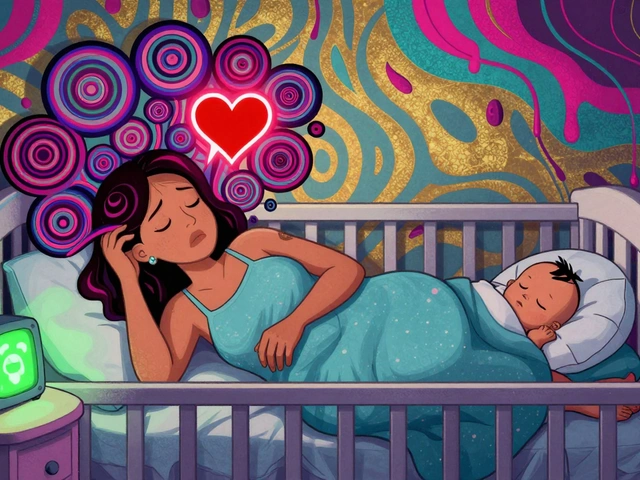
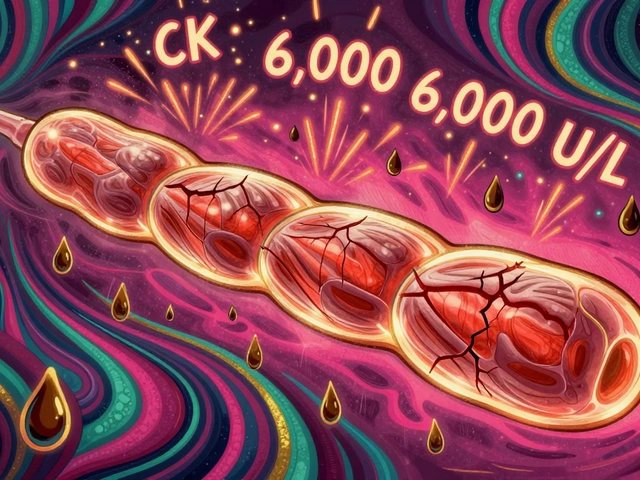
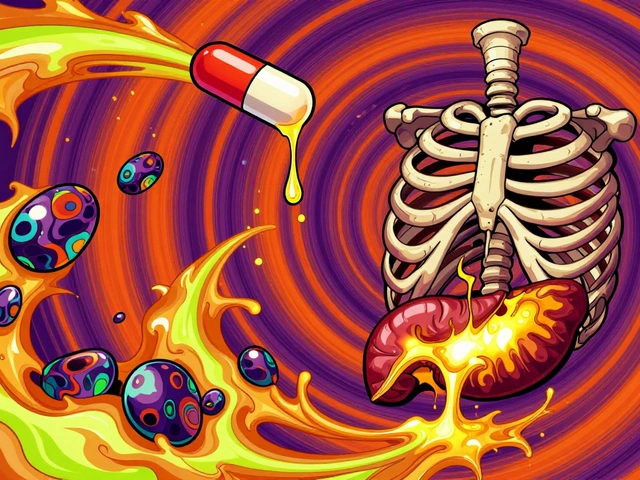

Logan Romine
November 21, 2025 AT 03:33Chris Vere
November 22, 2025 AT 03:47Mark Kahn
November 23, 2025 AT 06:10Swati Jain
November 24, 2025 AT 19:44Julia Strothers
November 25, 2025 AT 04:34Erika Sta. Maria
November 26, 2025 AT 16:13Nikhil Purohit
November 28, 2025 AT 04:23David vaughan
November 29, 2025 AT 05:48David Cusack
November 30, 2025 AT 14:52Elaina Cronin
December 2, 2025 AT 13:21Willie Doherty
December 2, 2025 AT 17:08